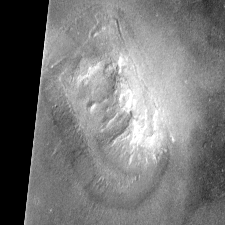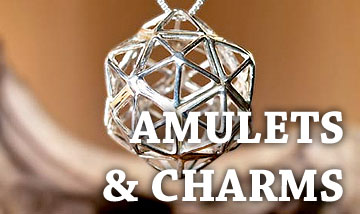Face on Mars
Face on Mars : is a theory of a face on mars, constructed by some unknown civilisation. This idea has been a subject of debate and wonder for almost 25 years. In 1976 the Viking Orbiter sent back an image from the Cydonia region of Mars. Some scientists were intrigued by a certain formation that seemed to strongly resemble a human face. However because the red planet had such a vast array of features to be examined "The Face on Mars" was largely accepted by most scientists as a trick of the light or merely wishful thinking. There was no direct evidence to suggest that sentient beings had existed on Mars, hence no real reason to think that the "Face" was anything more that a natural formation.
The
whole idea of a face on Mars might have completely been forgotten
altogether, had it not been for its rediscovery by two engineers at the
Goddard Spaceflight Centre; Gregory Molenaar and Vincent DiPietro, from
later Viking pictures. Once released to the general public the
picture became an overnight sensation, despite assurances from NASA that
the image was not a "real" face. However the symmetrical
nature of the formation and its uncanny resemblance to the human face, led
some to believe that this had to be more than just a simple rock
formation.
A few researchers began to examine the "face" more closely. Stanley
V. McDaniel (a Professor of Philosophy at Sonoma State University in
northern California) and Mark
J. Carlotto (an electrical engineer and experienced digital image
processor) began to clean up the original NASA images using digital
technology. Some of the more advanced images suggested even more human-like features in the Face. It
appeared as if it
were wearing some kind of headpiece or helmet. It also appeared as if
teeth were present in the mouth and irises within the eyes. More
intriguing three-dimensional views which sprang from further digital
enhancement led many to believe that this was not a trick of the light and
surely was evidence of a civilisation on another planet.
There have been other discoveries near the Face on the Cydonia plateau
which also looked as if they might be artificial. These include an
odd collection of features like pyramids and dubbed "the
city" by advocates. Some even believe that the pyramids
on earth were built by aliens, and as such gave even more credence to the
idea of a civilisation on Mars. Many of the Viking and aerial photographs
of the Cydonia pyramids appear to be very similar in structure to
those found on earth and some even liken the image of the Face to the Egyptian
Sphinx. This could have far reaching implications for the theory of
the origin of man. Was some ancient race of
beings present on both Earth and Mars? Did the same race seed both planets
with intelligent life? The possibilities seemed fantastic.
However there is probably a much more mundane explanation. The human
brain is in a sense programmed to recognise faces and it will often
attempt to construct the image of a face from many random features.
This is why we can often appear to see faces in all sorts of unlikely
situations, for example in stains on walls, blots on paper and faces from
the bark of trees. It is true that the Face does certainly resemble a face
but even its sheer size makes it an unlikely candidate for being an
artificial construction. It measures roughly 1.5 miles (7,920 feet)
long, 1.2 miles (6,336 feet) wide and is approximately .3 miles (1,584
feet) tall. By comparison, the base of the Great Pyramid at Giza measures
just 756 feet on a side.
In the spring of 1998, a new orbiter - the Mars
Global Surveyor (MGS) - would reach the Red Planet and resume mapping
the surface with far better, more high-resolution equipment than Viking
had carried. Unfortunately for great believers in the Face and the
pyramids the subsequent photos revealed nothing more than a lumpy outcropping in which one would be hard-pressed to
see the likeness of a human face. Likewise, other anomalous structures
like the pyramids and "the city" still looked
interesting, but hardly artificial.
The surface of Mars continues to be mapped by MGS and has returned many beautiful
pictures of this fascinating planet. Many more images have been placed on the Internet at the
Malin
Space Sciences Systems site. Here you can find photos of Mars'
craters, chasms, volcanoes, sand dunes, whirling dust devils and the polar
ice caps. There are also the latest images of Cydonia and the
"Face."
In April, 1998, MGS re-photographed
segments of the Cydonia region, including at least one of the pyramids and
the face.

DISCLAIMER
The images on this site were taking from publicly available sources,
and to the best of my knowledge the images are in the public domain.
If you do own the copyright to any of the images contained on this
site, and can provide proof that you own the image/images, it/they will be withdrawn if desired.
However permission is asked to continue using any image/images which you may own. Thanks
Useful Links
 DISCOVER TAROT ON iPHONE, iPAD AND ANDROID.
DISCOVER TAROT ON iPHONE, iPAD AND ANDROID.
Learn Tarot Card Meanings, what they mean when combined in a reading, test your knowledge in the Tarot Quiz and reveal what the future may hold with the Tarot Reading App.





